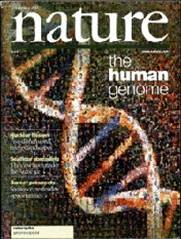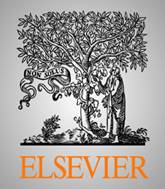Top 10 Journals in Biology and Medicine
The DBIO Top Ten Journals were chosen based on the winners of 100 most influential journals in biology and medicine over the last 100 years. More information.
The Clinical and Molecular, as well as the Molecular, Cellular and General Science teams, were each allotted three journals. The Natural History team, owing to its greater longevity, got four journals.
The team of Clinical experts and the team of Molecular, Cellular and General Science experts, separately asked themselves a single question:
On what category of journals within our areas of assigned expertise do most of the other journals in our area depend upon the most to make their own more specialized progress?
The Natural History team took a different approach. They asked themselves two questions.
What foundational disciplines gave birth to the modern evolutionary synthesis that, along with ecology, forms the basis of contemporary Natural History?
Their answers were Botany, Zoology, Anthropology and Paleontology.
They then asked: Which were the first-place winning journals in each of these four separate foundational fields?
The Clinical team decided to identify its allotment of 3 winners, from the three top finishers in the category of General Internal Medicine and Clinical Investigation. These were (in order of votes):
The New England Journal of Medicine
JAMA: The Journal of the American Medical Association
BMJ: The British Medical Journal (which beat out The Lancet by two votes)
The Molecular, Cellular and General Science team decided to identify its 3 winners from the top three finishers in the category of Journals Of General Science That Routinely Report Significant Biology and Medicine. These were (in order of votes):
The Natural History team identified its 4 winners towards the Top Ten from the disciplines of Botany, Zoology, Anthropology and Paleontology. They were:
The American Journal of Botany
The American Journal of Physical Anthropology (which finished in a three-way tie with the Journal of Human Evolution, and the American Journal of Human Biology, but then won according to tie-breaking rules on grounds of longevity)
Nature: The Journal of the Centennial of SLA
The Journal of the Centennial of SLA was chosen by a write-in portion at the end of the regular DBIO 100 ballot. Any journal, whether previously nominated and included within the main body of the poll by the expert teams, or not, was eligible to be written in and counted. |
Elsevier: The Publisher of the Centennial of SLA
Elsevier won in this category by virtue of having more winning journals (20) than any other. Wiley was next with 14, with the Nature Publishing Group and Wolter-Kluwer Health/ Lippincott, Williams and Wilkins in the high single digits. Elsevier also had the most titles nominated in the poll (82 out of the 403) and the highest winning percentage (24%).
|
Rev. June 2009


